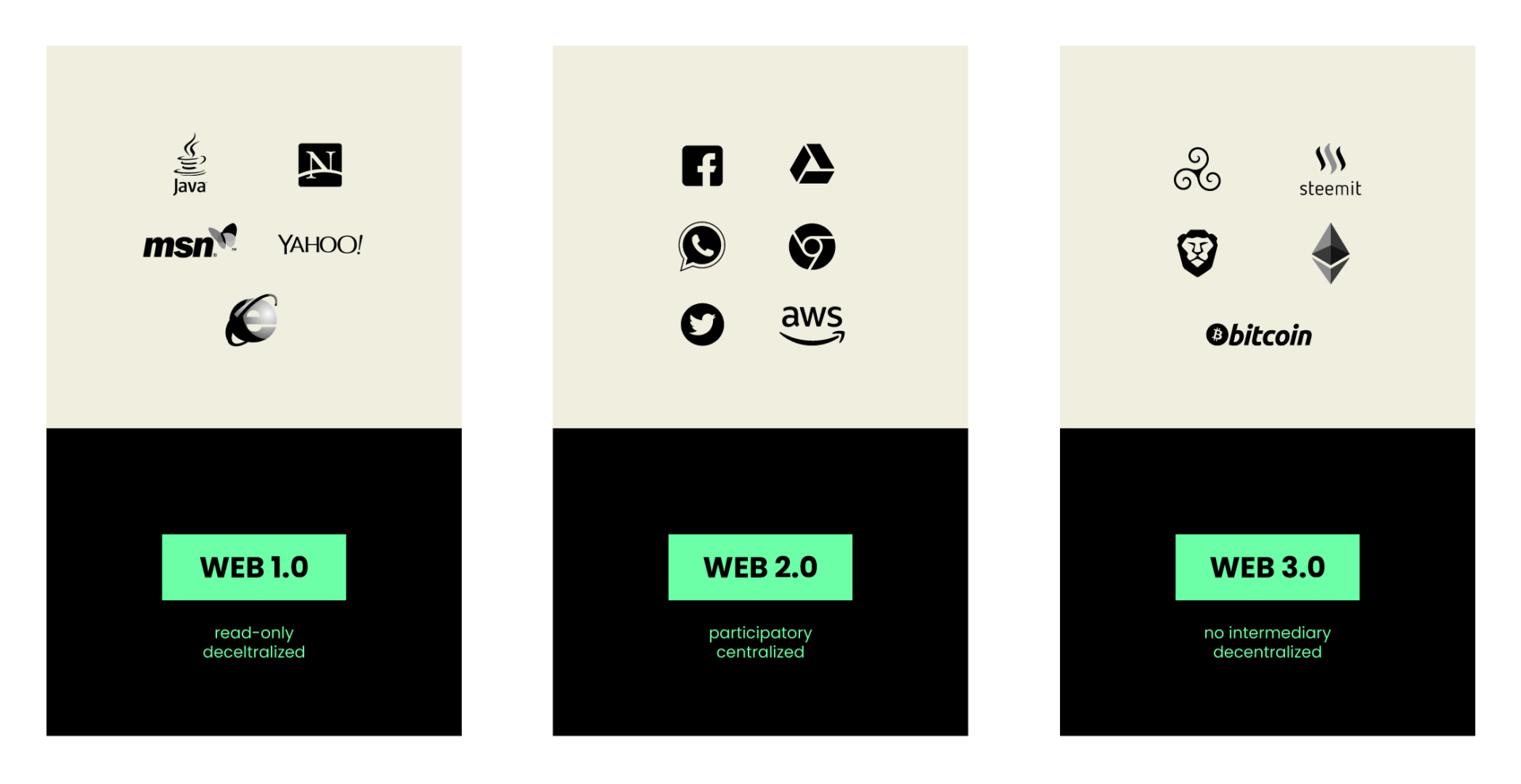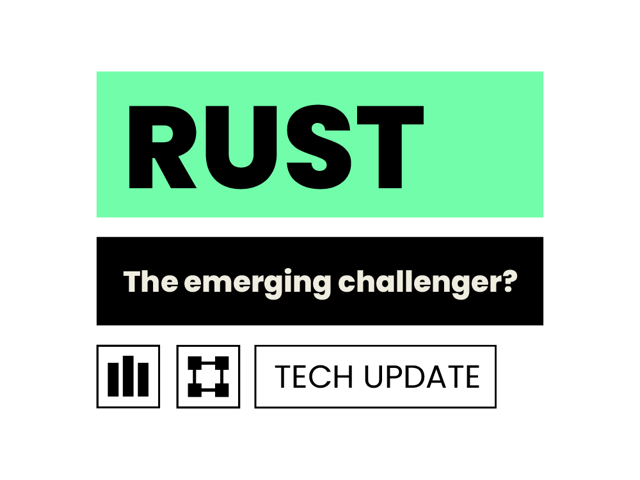Will Web 3.0 be de-centralised?

0.1 SETTING THE STAGE FOR WEB 3.0
Web 1.0
The early internet was an ecosystem where information could be published in the static form of text and images. It was displayed with no interaction between the web page and the user. It was pre-social media, before platforms, and the monetisation of the internet was still in its infancy.
Web 2.0
The difference between Web 1.0 and Web 2.0 is not only the internet’s underlying infrastructure changed but also the ability of users to create, share, and interact with the web, which resulted in increasing centralisation—enabling the emergence of global platforms.
Web 3.0
The next iteration, Web 3.0, has been announced for over a decade. However, a revolutionary shift in how users experience it, what they can do with it, and how it operates hasn’t arrived. For some, “the internet should not be entrusted to a handful of platforms.” De-centralisation is a way to change that, regain control, to re-create a fair and open public internet as—a public utility. Our focus is on Blockchain (crypto-web), Solid (protocol standards), and the Spatial Web (internet of things) though this list is not exhaustive of Web 3.0 visions. However, a fundamental question remains “will any current visions lead to a revolutionary new Internet?”
02. THE CRYPTO WEB
Blockchain is a de-centralised peer-to-peer (p2p) ledger incentivised by a token economy. We focus on the internet based on blockchain technology, not the asset class called cryptocurrencies.
The user-controlled internet
De-centralisation is a belief that no single entity should be able to take control. De-centralised Autonomous Organisations (DAOs) guarantee transparency by aligning the interests of participants through token economies embedded into smart contracts on the blockchain. The more successful an app, service or platform is, the higher the token’s value, and more members get rewarded—a virtuous cycle whereby only changes that are in the interests of its members get adopted. Through tokens, a DAO is effectively member-owned and governed by community consensus. However, so far, no functioning, stable DAO has emerged.
Writing unchangeable, air-tight, understandable and fair smart contracts is the unyielding problem. Because to do so, the governance structure must encapsulate the entire lifecycle. From another viewpoint, you are tasking software developers to hard code the rules for democracy without the ability to write amendments. In practice, the problem runs even deeper. The entity that created the app, service or platform also writes the smart contracts that control the creation and distribution of tokens.
This means that whoever controls the distribution of tokens is the de-facto central controlling authority. Which prompts the question, “why add all this complexity and energy usage, aside from creating a wealth transaction system that no central authority controls?”
03. THE SOLID APPROACH
Social Linked Data (Solid) is best known for the involvement of Sir Tim Berners-Lee, the web inventor. This open standard project aims to change how web applications can store data in a de-centralised manner. Solid is a set of open standards. Personal Online Data Stores (Pods) act as personal web servers that can store your data. Solid relies on the standardisation of ontologies to describe this data. The underlying structures come from the “Semantic Web”, the last decade’s term for Web 3.0. Solid envisions a world where applications retrieve and store data in a collection of pods hosted by interchangeable providers. Since the data is in a standardised format within these pods, users could freely change apps or pod providers and take their data with them.
However, Solid’s adoption thus far has been limited. Writing specifications and ontologies that cover the variety of content on the web is laborious, and in practice, the speed of internet innovation outpaces that of standardisation. If a business were to take a Solid approach, it would lose control of valuable data and how to best optimise for user stickiness. So, economically speaking, why would a business go through all the trouble—without a financial incentive?
Nonetheless, two European government initiatives actively investigate Solid as an underlying technology. The governments of Catalonia and Flanders are both working on this. The European Union has laws regarding data privacy (GDPR); potentially, using Solid could be an EU-centric way for governments to give citizens access to their personal data. The hope is that increased adoption would enable an innovation ecosystem.
04. THE SPATIAL WEB
The Spatial Web is a continuation of Web 2.0, integrating the ongoing developments: 5G (bandwidth capability), IoT (internet of things), AI/ML (artificial intelligence/machine learning), and AR/VR (augmented/virtual reality). The Spatial Web grows by users’ devices sensing and reporting more data. This increased interaction feeds an information layer extending so far that the digital twin and the natural world blend into a spatial environment until it becomes a virtual representation of real life.
The Metaverse
The Metaverse has the same end goal as the Spatial Web; it just takes a different approach. The Metaverse is like a mirror image of the Spatial Web. They are interwoven together, with VR/AR as a means to consume spatial content. However, VR/AR is not required; virtual worlds have existed for years (Second Life, Sims, Fortnite), and virtual communities have existed since the dawn of the internet. The key logic of the Metaverse and the Spatial Web is the interconnectedness between virtual worlds – i.e., not locked into a single platform’s Metaverse.
Without this free movement, users would not be able to transfer their data resulting in siloed environments, each with branded content and capabilities. Facebook’s (Meta) name claim is a nod towards a possible future of interconnected virtual worlds. It’s important to note that the business incentives for connecting virtual worlds have not been articulated.
05. THE MOST PROBABLE OUTCOME
Solid
Solid aims to restore the original vision of the World Wide Web by re-decentralising data. It defines how and where data is stored and accessed but aside from the standardisation effort, it would require international legislation that forces platforms to share valuable data.
Crypto Web
The crypto web enforces de-centralisation by the invisible hand of token economies. Data is de-centralised by design and governed by protocols. It trusts those protocols to be fair and open but has yet to deliver a stable governance model that can withstand the market forces of the underlying token.
Even if the crypto web does deliver a stable governance protocol, it would still be complex and costly to run. Therefore it would seem its benefits reside in the grey economy where trust cannot be enforced by traditional laws and contracts.
Spatial Web/Metaverse
The Spatial Web/Metaverse attempts to merge the digital world with the physical until a level of parity is reached. Both rely on the free flow of data without explicitly stating how or why companies would share. There is an unstated belief that “something” will be strong enough to go against the centralisation forces that created the platforms of Web 2.0.
The Conclusion
It seems that the most likely outcome for Web 3.0 will be an extension of Web 2.0. A denser, richer version where new platforms emerge and others fade. While the data flow remains controlled by platforms, monetised and governed by laws, i.e. Web 3.0 will not be de-centralised.

